HRV and Aging: Why It’s Important and What To Do About It
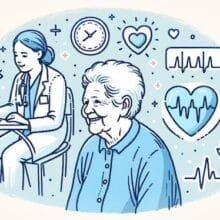
HRV and aging are connected in that your Heart Rate Variability declines as you age; in fact, it can indicate how fast (or slow) you’re aging, as well as how good (or bad) your overall health status is. Learn how to discover your HRV, why it’s important and what to do about it.
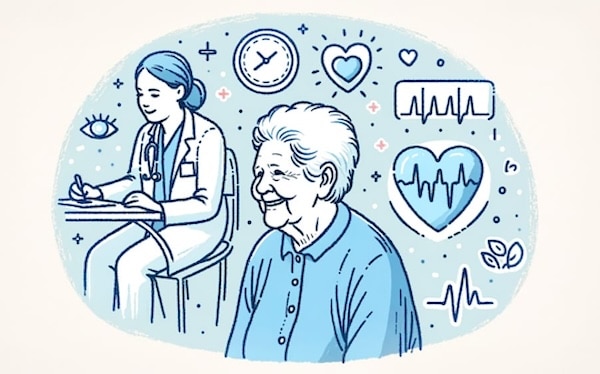
Credit: Fibion.com
HRV and aging both face a slippery slope over time: you get older; HRV gets lower.
You might have heard about HRV, or Heart Rate Variability. It’s a nuanced measure of the autonomic nervous system’s function, and an indicator of the body’s ability to adapt and respond to different stressors. Given that, you have a clue about the slippery slope. One attribute of getting older is the progressive decline in resiliency, and that, my friend, is all about adaptation, or the lack thereof.
This post examines the relationship between HRV and aging, and a whole lot more, because it turns out the HRV is a good predictor of not only how well your aging (as in, not too quickly), but of your overall health as well. I relied on HRV information published by WebMD, The Output, Elite HRV, HeartMath, the various studies indicated below, and my own Fitbit.
Here’s what I cover:
- What is HRV
- What HRV indicates about health, fitness and aging
- HRV scores by age and gender
- How to track your HRV
- Strategies to increase your HRV
- Your HRV and aging takeaway
Let’s dig in…
What Is HRV?

Credit: Goceppro.com
I repeat, HRV is Heart Rate Variability. This is not your pulse, or heart rate. You can place your index and middle fingers gently but firmly on the radial artery, located on the thumb side of your wrist, to feel and count your pulse, but this is not your HRV.
Unlike heart rate (or pulse), which counts the number of heartbeats per minute, HRV measures the precise variations in time intervals between successive heartbeats, known as interbeat intervals. (They’re measured in milliseconds.) These variations are influenced by the sympathetic and parasympathetic branches of the autonomic nervous system, reflecting the heart’s efficiency in adapting to stress, recovery, and environmental demands.
So, as a measure of the variation in time between each heartbeat, HRV is not about how fast or slow your heart beats, but rather how consistently your heart rate fluctuates. A healthy heart rate is not a perfect metronome; it speeds up slightly when you inhale and slows down slightly when you exhale.
The variation measured by HRV is influenced by your autonomic nervous system (ANS), which has two branches:
- The sympathetic nervous system (fight-or-flight response)
- The parasympathetic nervous system (rest-and-digest response)
A higher HRV indicates a healthy balance between these two branches, with the ability to adapt to stress and recover quickly. Conversely, a lower HRV suggests a dominance of the sympathetic nervous system, which may be associated with a higher risk of health problems like heart disease, high blood pressure, and even diabetes.
HRV is used in various fields, including sports science, to assess recovery and readiness; in clinical settings, to monitor heart health; and in the wellness industry, to evaluate stress and overall well-being.
What HRV Indicates About Health, Fitness and Aging
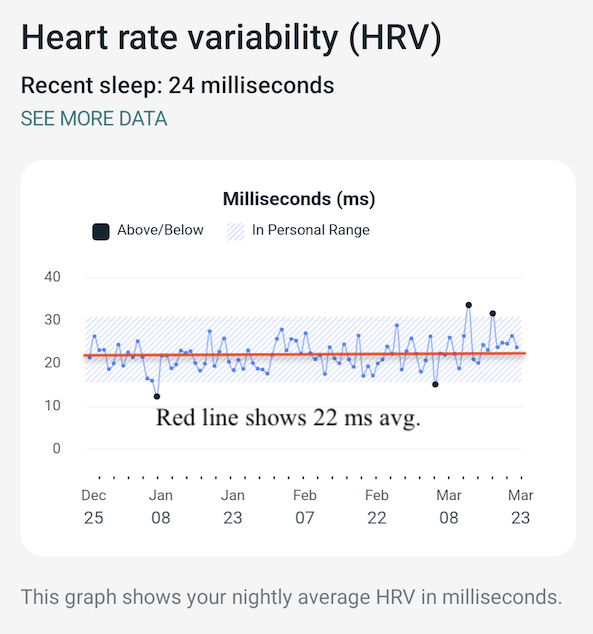
Improving HRV is associated with enhanced stress resilience, better chronic disease outcomes (such as cardiovascular diseases), improved performance in athletes, and overall increased longevity.
This is all good, which is why I’m concerned about my own HRV score. As the screenshot above from my Fitbit app indicates, over the last several months, my HRV averaged about 22 ms (milliseconds) per day. Later on you can see how this compares to others of my gender (male) and age (68). Suffice to say that it’s in the expected range, but not optimal. I’m focused on optimal.
A high HRV is indicative of a more adaptable heart and nervous system, which can more effectively manage stress, recover from exercise, and reduce the likelihood of stress-related health issues.
Specifically, a high HRV is associated with several health benefits, including:
- Slower aging
- Better fitness
- Improved cardiovascular health
- Better chronic disease outcomes
- Better stress resilience
- Enhanced cognitive function
- Less autoimmune issues
- Increased sleep quality
Let’s tackle these.
Chronic Disease
Low HRV is linked to a variety of chronic diseases.
Metabolic syndrome and diabetes
Low HRV is associated with insulin resistance and metabolic dysregulation, potentially due to the chronic stress response stimulating glucose production and impairing insulin sensitivity.
Cardiovascular Disease
Low HRV is a known risk factor for cardiovascular diseases. It reflects reduced parasympathetic activity and potentially increased sympathetic activation, conditions that can lead to hypertension, increased heart rate, and higher cardiovascular strain. Over time, these conditions stress the heart and circulatory system, increasing the risk of heart attacks, strokes, and other cardiovascular events. Individuals with low HRV may also experience arrhythmias more frequently, as the heart’s ability to adapt to rapid changes in demand is compromised.
Chronic stress, cognition and mental health issues
Conditions such as depression and anxiety have been linked to low HRV, likely due to the continuous activation of the stress response system affecting both the brain and heart.
Emerging research also suggests a correlation between HRV and cognitive function. Low HRV has been associated with poorer performance on tasks requiring executive function, attention, and memory. This relationship is particularly evident in older adults, where reduced HRV may exacerbate the cognitive declines associated with aging. The mechanism behind this correlation is not fully understood but is believed to involve the vagus nerve’s role in regulating stress and inflammation, which can affect brain health and function.
Autoimmune diseases
Reduced vagal tone may impair the body’s ability to regulate inflammation, contributing to the development or worsening of autoimmune conditions.
HRV and Fitness
Higher levels of physical fitness are associated with higher HRV
Regular physical activity, especially aerobic exercises, can improve HRV by enhancing vagal tone, the activity of the parasympathetic nervous system. Vagal tone is a measure of cardiovascular function that facilitates adaptive responses to environmental challenges. Low vagal tone is associated with poor emotional and attentional regulation in children, and has been conceptualized as a marker of sensitivity to stress.Athletes, particularly those in endurance sports, often have significantly higher HRV than non-athletes, reflecting their greater cardiovascular efficiency and resilience to stress.
Low HRV indicates reduced adaptability of the heart to stressors and a dominance of the sympathetic nervous system over the parasympathetic nervous system
I mentioned this earlier. This imbalance between sympathetic and parasympathetic can lead to increased stress levels, reduced physical resilience, and lower overall fitness. In individuals with low HRV, the body’s ability to respond to and recover from physical activity is compromised, potentially leading to faster exhaustion and prolonged recovery times. Naturally, this effect can discourage consistent engagement in physical exercise, creating a negative feedback loop that further impacts general health and fitness.
HRV and Aging
As we age, HRV naturally declines, reflecting the wear and tear on the heart and the autonomic nervous system. This is partly due to a decrease in the heart’s ability to respond to changes and a decline in the function of the vagus nerve, the main nerve of the parasympathetic nervous system.
The key thing here is to ascertain the difference between a natural decline in HRV you can live with and an accelerated decline that might indicate too much stress in your life, a lack of exercise, or a chronic health condition. Frankly, the only way I can think of to do this is to compare your HRV score with averages of your gender and age group (see below). If you want to be better than average, so does your HRV.
Prematurely low HRV can be indicative of accelerated aging processes. This can manifest as increased biological age compared to chronological age, higher prevalence of age-related diseases, and potentially reduced lifespan. The mechanisms are complex but include increased inflammation, higher stress levels, and reduced cellular repair capacity.
A very informative review of the connection between HRV and aging that I encourage you to read, entitled Exploring HRV in Aging: Insights for Geriatric Health and Wellness, discusses how HRV is increasingly recognized as a valuable biomarker for biological aging. It goes beyond chronological age by offering insights into the health of the cardiovascular and autonomic nervous systems.
The article highlights the following:
- Lower HRV is associated with advanced biological aging and increased risk of age-related health issues.
- Monitoring HRV changes in older adults can help identify individuals at higher risk of health deterioration, allowing for early intervention and improved quality of life.
At this point you know what HRV is and that it’s a valuable indicator of overall health and how well you’re aging. Now let’s take a look at HRV scores.
HRV Scores By Age Group and Gender
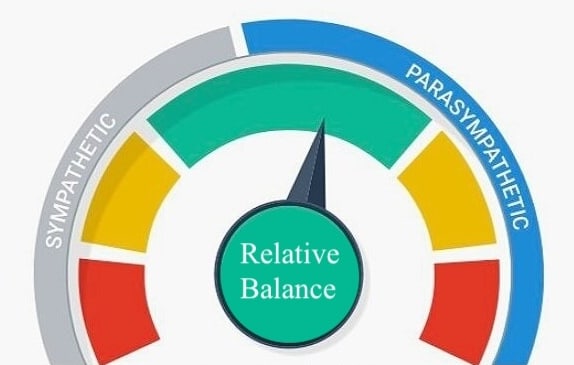
HRV scores can vary significantly based on age, gender, fitness level and health status. In general, men may have slightly higher HRV than women, though the difference diminishes with age. The average HRV decreases as people age, but these averages can vary widely:
- Young adults (18-25): Typically show the highest HRV scores.
- Middle-aged adults (26-50): Generally exhibit a gradual decline in HRV.
- Older adults (50+): Often have lower HRV scores, reflecting the natural aging process.
These are broad categorizations, and individual HRV can differ significantly based on lifestyle, stress levels, and physical fitness.
There is no single “normal” HRV score, as it can vary depending on factors like age, fitness level, and even time of day or night; however, here’s a general guideline:
- Higher HRV (good): Generally indicates a healthy balance between the sympathetic and parasympathetic nervous systems.
- Lower HRV (not necessarily bad): May suggest a dominance of the sympathetic nervous system, but it can also be caused by short-term factors like stress or lack of sleep. The key here is “short-term”.
So, is your HRV high, medium or low?
There’s really no way to know without using some device to measure it, the topic of the next section. But first, let’s get an idea of average HRV scores by age and gender.
General HRV Averages by Age and Gender (milliseconds)
| Age Group | Men (Average Range) | Women (Average Range) | Source |
| 20-29 | 70-100 ms | 60-90 ms | WebMD |
| 30-39 | 60-90 ms | 50-80 ms | Elite HRV |
| 40-49 | 50-80 ms | 40-70 ms | Welltory
Note: Welltory uses a different scale, so their average is for reference only |
| 50+ | 40-70 ms | 30-60 ms | Elite HRV |
Notice that there’s a gender difference in HRV scores.
Research suggests that, on average, men may have slightly lower HRV scores than women until advanced age, where the differences become less pronounced. Men and women may experience the effects of low HRV differently due to hormonal influences, stress response patterns, and cardiovascular risk profiles.
The hormonal protections (e.g. estrogen) that women benefit from seem to play a role in this disparity, especially in the context of cardiovascular health. But this advantage diminishes post menopause, and the implications of low HRV — such as increased risk of cardiovascular diseases — become more pronounced. Additionally, stress-related disorders with a link to low HRV, like anxiety and depression, are more prevalent in women, suggesting gender-specific pathways through which HRV affects health.
How to Track HRV
An ECG (electrocardiogram) is the established standard in clinical settings for evaluating heart health and function, including HRV.
Here’s why:
- Direct Measurement: An ECG directly measures the electrical activity of the heart, providing a precise picture of the time intervals between heartbeats. This allows for the most accurate calculation of HRV.
- Minimal Interference: Unlike wrist-worn devices that use optical sensors and can be affected by movement or improper placement, ECG electrodes placed on the chest provide a clear and consistent signal for HRV analysis.
Of course, you can’t always be hooked up to an ECG machine. Enter HRV measuring devices, such as that Fitbit or Apple watch you have on your wrist.
Here’s a comparison of how popular wearable brands handle HRV tracking. Realize that this information may quickly become outdated due to frequently updated features in these and other devices that track HRV.
| Device Brand | HRV Tracking | Pros | Cons |
| Apple Watch | Limited | Convenient, integrates with other Apple Health data. | Limited data points. May not be ideal for advanced users. |
| Whoop | Core Feature | Comprehensive data and recovery insights, good for athletes and data-driven users. | Subscription-based service, some users find the wristband bulky. |
| Fitbit | Emerging Feature | Good option for basic HRV tracking within the Fitbit ecosystem. | Limited data compared to Whoop or Oura, may not be available on all models. |
| Oura Ring | Core Feature | Continuous data, sleep focus, good for overall wellness tracking. | Subscription-based service, not ideal for activities involving hand contact. |
| Garmin Watch |
Varied | Good option for athletes who use Garmin for other training metrics, basic HRV insights. | Limited availability, data not as detailed as Whoop or Oura. |
| Sansome Watch | Emerging Feature | Good option for Samsung users who want basic HRV tracking within the Galaxy ecosystem. | Limited availability, data not as detailed as Whoop or Oura. |
Here’s a breakdown of some key points to consider:
- Accuracy: ECG-based trackers like Whoop and Oura are generally considered more accurate than wrist-based optical HR sensors used by Apple Watch, Fitbit, and Samsung watches.
- Data & Insights: Whoop and Oura offer the most comprehensive HRV data with recovery scores and other metrics. Apple Watch, Fitbit, and Samsung provide basic data points. Garmin sits somewhere in between, with some models offering more detailed scores.
- Subscription vs. Upfront Cost: Whoop and Oura require ongoing subscriptions, while others have an upfront cost.
- Convenience & Design: Wristwatches offer easy access but may be bulky. Oura Ring is discreet but not suitable for activities with hand contact.
Overall:
- If HRV is a core focus, Whoop and Oura stand out with their continuous tracking and detailed insights. For basic HRV data within an existing ecosystem, Fitbit, Garmin, and Samsung options can be considered. Apple Watch offers limited HRV tracking, but excels in other areas like smartwatch functionality.
Strategies to Increase HRV

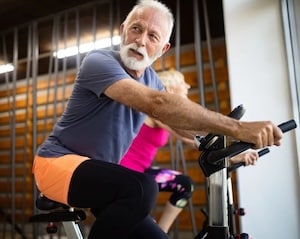
Here they are in a nutshell:
- Regular Exercise: Aerobic activities like walking, running, and swimming are particularly effective at improving HRV. Strength training too.
- Stress Management: Practices such as mindfulness, meditation, and yoga can reduce stress and enhance parasympathetic activity, thereby increasing HRV.
- Adequate Sleep: Quality sleep is crucial for recovery and maintaining a healthy HRV. Establishing regular sleep patterns can have a positive impact.
- Healthy Diet: A balanced diet rich in fruits, vegetables, and omega-3 fatty acids can improve cardiovascular health and HRV.
- Avoidance of Stimulants: Reducing intake of caffeine, alcohol, and nicotine, which can stress the heart and lower HRV.
- Breathing Exercises: Slow, deep breathing exercises can enhance vagal tone and increase HRV.
- Hydration:
- Limit alcohol and caffeine: Excessive consumption can disrupt your heart rate variability.
Let’s explore further the impact that exercise and sleep have on HRV, and then I want to let you know about HeartMath.
Exercise, Hydration and HRV
Regular exercise is one of the best ways to improve HRV. Exercise strengthens the heart muscle, improves blood flow, and enhances the function of the autonomic nervous system. That said, it’s important to note that strenuous exercise can lower HRV in the short term. The key is to find a balance between challenging yourself and allowing your body adequate recovery time.
Consistent aerobic training in the “Zone 2” lower-intensity heart rate zones is particularly effective for increasing HRV over time. Typically, Zone 2 training is done at a heart rate no higher than 80% of your max heart rate, which you probably don’t know unless you’ve done a stress test (typically done on a treadmill or stationary bike) under the purview of a cardiologist. As a rule of thumb, the next time your walking, running or biking up a steep hill and your heart is beating so fast that you can barely shout out one word — that’s your maximum heart rate.
Read my post: How To Reduce Obesity In Older Adults and Improve VO2 Max
A study published in The Journal of Women’s Health in 2021 showed that women aged 60 years and older demonstrated significant improvements in parasympathetic indices of HRV with exercise, despite no change in maximal cardiorespiratory capacity (VO2 max). My two comments about that: (1) Probably the same for men; and (2) I don’t think the women in the study were relegate to frequent Zone 2 training, but that type of training can improve VO2 max — the most dramatic causal determinant of overall mortality — although it’s best if combined with Zone 5 training as well.
Hydration and HRV
I want to point out the importance of getting enough hydration — from water in particular — and HRV.
Many of us simply don’t drink enough water throughout the day. Moreover, our diets commonly contain the following, all of which are dehydrating to some degree:
- Caffeinated Beverages: Coffee, tea, and some sodas contain caffeine, which has a mild diuretic effect. This means it can increase urine output and contribute to fluid loss. However, the dehydrating effect of moderate caffeine intake is likely minimal for most healthy people, especially if you also consume water throughout the day.
- Alcohol: Alcohol also acts as a diuretic and can contribute to dehydration. It’s important to alternate alcoholic drinks with water to stay hydrated.
- Sugary Drinks: Sugary drinks like sodas and sports drinks can cause the body to lose fluids through urination. Water is a better choice for hydration.
- High-Sodium Foods: A diet high in sodium can increase thirst and lead to dehydration if not accompanied by adequate fluid intake.
Here’s how proper hydration can improve HRV through its effect on blood volume, autonomic nervous system balance and electrolyte balance.
Blood Volume and Heart Function
Dehydration decreases blood volume, making the heart work harder to pump blood throughout the body. This increased workload can lead to a less efficient and more stressed heart, reflected in a lower HRV. Proper hydration ensures adequate blood volume, allowing the heart to function more efficiently and maintain a healthy variability in its rhythm.
Autonomic Nervous System Balance
Hydration plays a role in the functioning of the autonomic nervous system (ANS), which has two branches: sympathetic (fight-or-flight) and parasympathetic (rest-and-digest). Dehydration can tip the balance towards the sympathetic branch, leading to a stressed state and reduced HRV. Proper hydration helps maintain a healthy balance between these branches, promoting a more relaxed state and potentially improving HRV.
Electrolyte Balance
Electrolytes are minerals that help conduct electrical signals in the body, including those related to heart function. Dehydration can lead to electrolyte imbalances, potentially disrupting the electrical signals responsible for heart rate variability. Maintaining proper hydration ensures a healthy electrolyte balance for optimal heart function and HRV.
And now to the final thing in this post that you can do to improve your HRV.
HeartMath and HRV
The HeartMath Institute is a prominent advocate for using HRV as a tool for stress management and overall well-being.
Here’s what they report about their techniques and their connection to HRV:
- Heart Coherence: They emphasize a state called “heart coherence,” characterized by a specific pattern of HRV reflecting a balanced and healthy interaction between the sympathetic and parasympathetic nervous systems. They believe this state promotes resilience and optimal physiological functioning.
- Stress Management Techniques: HeartMath offers various stress management techniques designed to achieve heart coherence and improve HRV. These include:
- Heart-Focused Breathing: This technique involves focusing attention on the area around the heart while breathing slowly and deeply.
- Emotional Regulation Techniques: They teach methods to identify and manage negative emotions, promoting a positive emotional state which, according to HeartMath, benefits HRV.
- Biofeedback Training: HeartMath incorporates biofeedback tools that provide real-time feedback on HRV, allowing individuals to learn to self-regulate their emotional state and improve heart coherence.
While the HeartMath Institute promotes their techniques and their connection to HRV, it’s important to note that research is ongoing. Some studies support their claims, while others require further investigation.
Cllick this link to their page discussing research on their techniques.
Your HRV and Aging and Everything Else Takeaway
Heart Rate Variability is a powerful marker of health, wellness, and fitness.
While HRV tends to decrease with age, reflecting the natural decline in physiological resilience and stress adaptability, this trend is not inevitable and can be influenced by a healthy lifestyle.
Low HRV serves as a warning sign for a range of health issues, affecting mental health, physical fitness, heart health, and the aging process across different age groups and genders.
This association between low HRV and chronic diseases highlights the importance of lifestyle interventions aimed at improving autonomic balance, such as stress management, regular physical activity, and dietary adjustments.
There’s also a potential genetic component.
So, to pack it all in four things to remember:
- Genetics: There’s a genetic component to HRV, with some individuals naturally predisposed to higher or lower HRV.
- Lifestyle: Factors such as physical activity levels, stress, diet, hydration and sleep quality can significantly affect HRV across all ages and genders.
- Health Status: Chronic illnesses, especially those affecting the heart or autonomic nervous system, can lead to lower HRV.
- HRV Measurement: You can track your HRV with a variety of personal devices. Their accuracy is improving, but none are as accurate as an ECG.
As for me, I probably get enough Zone 5 training (intense effort, short duration), but I bought a stationary bike so I can be more consistent with Zone 2 (light effort, longer duration). Also, I endeavor to improve my sleep, and recognize whatever low-level but consistent stress that might be in my life. I think I’m doing OK with the rest of the HRV-boosting stuff.
We will see!
Last Updated on April 7, 2024 by Joe Garma


